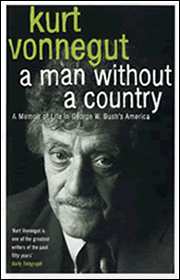 We love to read writers when they write about writing. Whether it is George Orwell’s Why I Write, Stephen King On Writing, or Scarlett Thomas’s Monkeys with Typewriters, there is an enduring need to peep behind the curtain. These blends of memoir and ‘how to’ guide fascinate us either because we want to see how our favourite stories were created, or if we are trying to follow their path we are keen to see if the authors have pointed out any shortcuts. Therefore the thoughts of W. Somerset Maugham – prolific novelist, travel writer and playwright – cannot fail to be instructive.
We love to read writers when they write about writing. Whether it is George Orwell’s Why I Write, Stephen King On Writing, or Scarlett Thomas’s Monkeys with Typewriters, there is an enduring need to peep behind the curtain. These blends of memoir and ‘how to’ guide fascinate us either because we want to see how our favourite stories were created, or if we are trying to follow their path we are keen to see if the authors have pointed out any shortcuts. Therefore the thoughts of W. Somerset Maugham – prolific novelist, travel writer and playwright – cannot fail to be instructive.
He writes authoritatively about his own work, covering the process, his aims and its reception by readers and critics. He is also knowledgable about the classics as well as contemporaries such as Colette, but is unafraid to turn his wry glance towards those who favour literary pretensions and his own place in the history of literature. As a dramatist he is master of the concise yet withering put-down (a technique he apparently honed against school bullies):
There is no more merit in having read a thousand books than in having ploughed a thousand fields,
before turning his gaze to the wider world of philosophical and religious theory, so that the book moves from memoir and writing guide to consider the eternal topic of how best to live.
For all his apparent candour, Mr Maugham does gloss over one area: that of his own personal life. Although he talks of love and beauty it is in such general terms that the reader may be forgiven for thinking he died (in his 90s) as a confirmed bachelor. He is at times dismissive of love and his behaviour while under its influence. It is only by checking other sources that his firm adherence to his own words becomes clear:
I demanded freedom for myself and I was prepared to give freedom to others.
Yet the nature of this freedom is only briefly alluded to in a passage concerning his travel writing:
I am shy of making acquaintance with strangers, but I was fortunate enough to have on my journeys a companion who had such an inestimable social gift. He had an amiability of disposition that enabled him in a very short time to make friends with people in ships, clubs, bar-rooms, and hotels, so that through him I was able to get into easy contact with an immense number of persons whom otherwise I should have known only from a distance.
This is a very subtle and low-key tribute to the man who shared his life for 30 years – a relationship which survived and outlasted Maugham’s marriage. Yet, given the legal status of such relationships at the time he was writing, it is undoubtably a sensible one.
No doubt this gift for remaining just outside the spotlights also served Maugham well during his brief intelligence career. Operating in Switzerland and Russia, the man who wrote:
Some of us are so made that there is nothing else we can do… we write because we must
couldn’t resist turning his experiences into stories, crafting a series of adventures for a gentlemanly spy by the name of Ashenden. Ian Fleming, a friend and admirer of Maugham’s, seems to have been inspired by these tales. Enough that in Quantum of Solace – which lent its name if not its plot to the second Daniel Craig Bond film – Fleming has his agent share Ashenden’s disillusionment with the supposedly glamorous life of the fictional spy.
If there is a negative point to this book, it is that so many other interesting works are discussed so engagingly that my ‘to read’ list has seen a large number of new additions. Although he would live a good many years after its publication, there is an air of a man settling his accounts and looking back on a career that has given him much pleasure. The book is enjoyable and illuminating, a fitting testament to a wide-ranging man of letters.


































